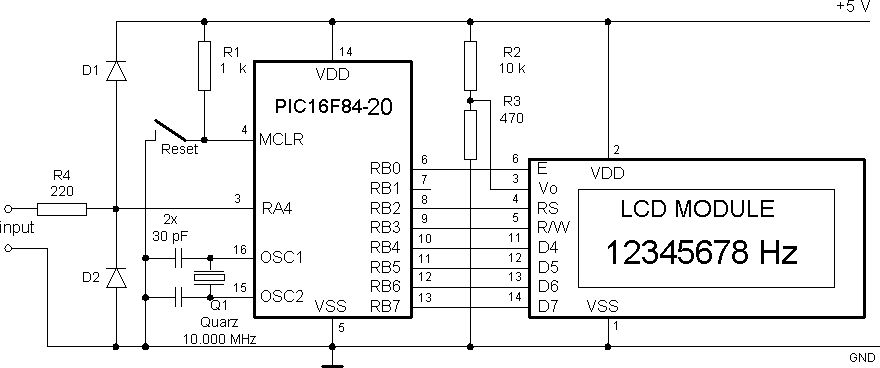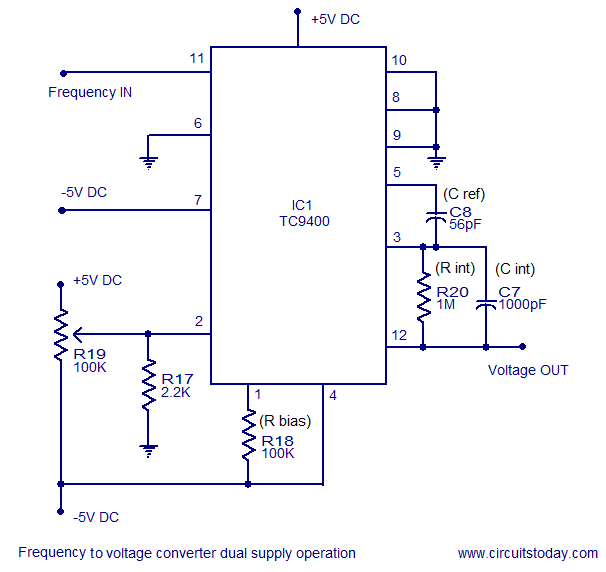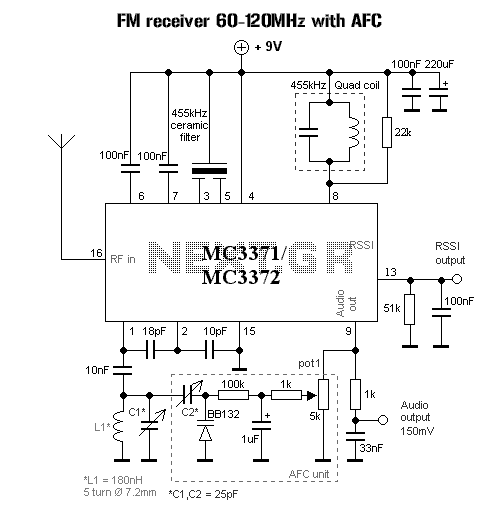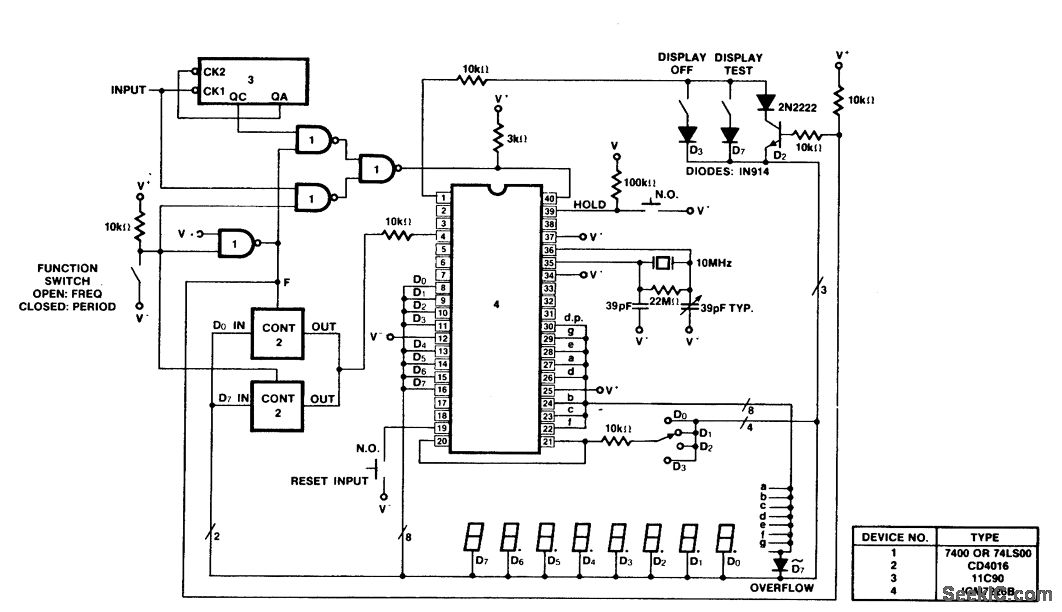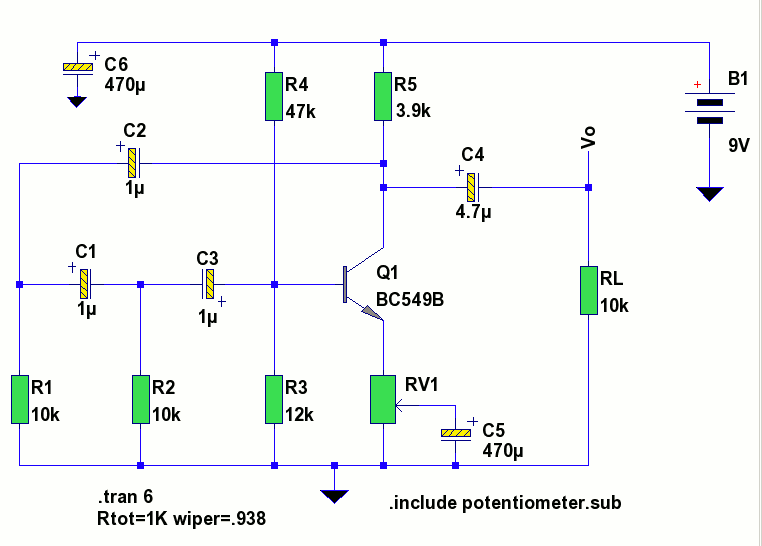
frequency doubler with 4069
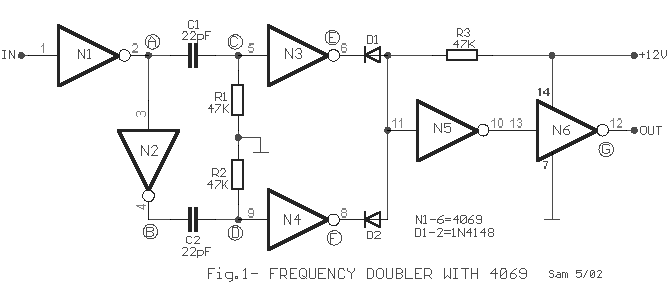
A frequency doubler can be constructed using a single 4069 hex inverter IC, resulting in an output pulse train with a frequency that is twice that of the square wave input signal.
The frequency doubler circuit utilizing the 4069 hex inverter IC is an efficient method for generating a signal at double the frequency of the input. The 4069 is a quad inverter, which means it contains four independent inverter gates, allowing for versatile designs.
To construct the frequency doubler, the circuit typically consists of one inverter from the 4069 IC, connected to the input square wave signal. The output of this inverter is then fed into a second inverter, creating a feedback loop that generates oscillations. The feedback is achieved through a resistor-capacitor (RC) network, which determines the timing characteristics of the circuit.
The input square wave signal is applied to the first inverter, which inverts the signal. The output from the first inverter is then connected to an RC network, consisting of a resistor (R) and capacitor (C). This RC network introduces a phase shift that is crucial for frequency doubling. The output of the RC network is then fed into the second inverter, which further inverts the signal.
The result is a pulse train at the output that has a frequency that is twice that of the original input signal. The output can be observed using an oscilloscope, which will display a waveform with a frequency that is double that of the input square wave.
This frequency doubler circuit is useful in various applications, including signal processing, modulation, and clock generation in digital circuits. The simplicity of using a single IC makes it an attractive solution for designers looking to implement frequency doubling in their projects. Proper selection of the resistor and capacitor values is critical, as it affects the performance and stability of the frequency doubling process.This frequency doubler using a single 4069 hex inverter IC, a frequency doubler can be constructed to give an output pulse train whose frequency is twice that of a squarewave input signal.. 🔗 External reference
The frequency doubler circuit utilizing the 4069 hex inverter IC is an efficient method for generating a signal at double the frequency of the input. The 4069 is a quad inverter, which means it contains four independent inverter gates, allowing for versatile designs.
To construct the frequency doubler, the circuit typically consists of one inverter from the 4069 IC, connected to the input square wave signal. The output of this inverter is then fed into a second inverter, creating a feedback loop that generates oscillations. The feedback is achieved through a resistor-capacitor (RC) network, which determines the timing characteristics of the circuit.
The input square wave signal is applied to the first inverter, which inverts the signal. The output from the first inverter is then connected to an RC network, consisting of a resistor (R) and capacitor (C). This RC network introduces a phase shift that is crucial for frequency doubling. The output of the RC network is then fed into the second inverter, which further inverts the signal.
The result is a pulse train at the output that has a frequency that is twice that of the original input signal. The output can be observed using an oscilloscope, which will display a waveform with a frequency that is double that of the input square wave.
This frequency doubler circuit is useful in various applications, including signal processing, modulation, and clock generation in digital circuits. The simplicity of using a single IC makes it an attractive solution for designers looking to implement frequency doubling in their projects. Proper selection of the resistor and capacitor values is critical, as it affects the performance and stability of the frequency doubling process.This frequency doubler using a single 4069 hex inverter IC, a frequency doubler can be constructed to give an output pulse train whose frequency is twice that of a squarewave input signal.. 🔗 External reference

